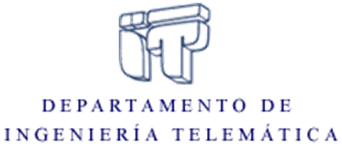Nowadays we can connect to the Internet in a great many places: at home, at work, in cafés, airports etc. And we are starting to become accustomed to all the services and applications that being connected provides in our everyday lives. Connecting vehicles is a natural step that will provide numerous advantages. These benefits will include bringing the more traditional applications (Web surfing, e-mail access or multimedia downloads) to our car seat, connecting the many devices that we already have installed in our cars (onboard computers, music and video players, sensors etc) to the Internet to stay up to date and inform us of possible problems, or arranging an appointment with the garage automatically when needed.
 Equipping our vehicles with communication capabilities will provide us with additional advantages. One of the aims is to improve road safety, one of the main causes of death in economically advanced societies. The European Union, through the eSafety programme, aims to reduce the number of casualties on the roads by 50 % in 2010, and to do so it is promoting the use of new technologies as a way of preventing accidents.
Equipping our vehicles with communication capabilities will provide us with additional advantages. One of the aims is to improve road safety, one of the main causes of death in economically advanced societies. The European Union, through the eSafety programme, aims to reduce the number of casualties on the roads by 50 % in 2010, and to do so it is promoting the use of new technologies as a way of preventing accidents.
Systems are being designed and deployed in order to equip vehicles with communication capabilities and ensure that these capabilities are used efficiently to improve road safety. This will allow vehicles to exchange a variety of information between one another and other systems installed on the roads, providing information on the condition of the roads and potential accidents that could take place. It will be possible to warn nearby vehicles of a bad manoeuvre or even an inevitable accident, allowing the various safety systems installed on the road to configure themselves in the most appropriate manner to minimise damage.
In addition to the safety, deployment and use of inter-vehicle and Internet communication, this technology will improve the effectiveness of the use of road infrastructures. For instance, it will warn vehicles about to join a road that has a traffic jam on it or, by communicating with signalling devices such as traffic lights, adjust the speed of the vehicle to minimise the time it spends stationary.
At the Carlos III University Network and Communication Services Group (Netcom), run by Professor Arturo Azcorra, we are working on projects, both nationally (the Poseidon Project) and Europe-wide (collaboration with the IMDEA Networks Research Institute), and we are working with several companies in Europe’s vehicle industry, designing systems that allow sets of devices deployed in vehicles to communicate with other vehicles and the Internet.
Read more:


 (75 KB)
(75 KB)